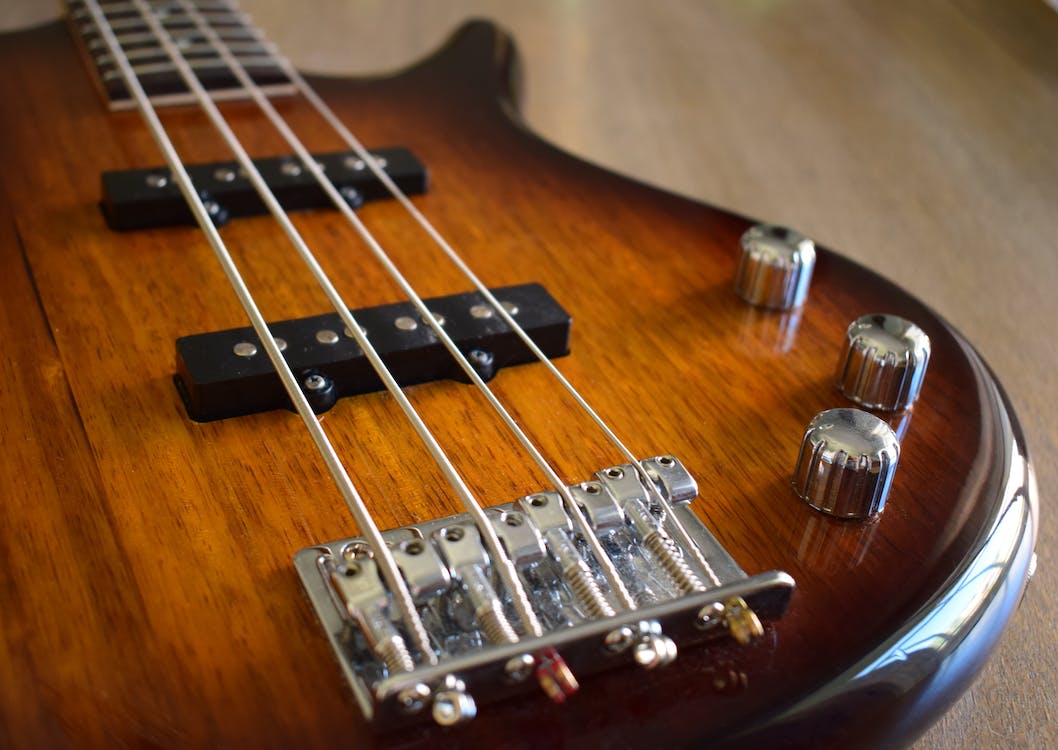Emerson, Lake & Palmer, often abbreviated as ELP, emerged in the early 1970s as one of the most successful rock acts of their era, defining and dominating the progressive rock scene. Comprising keyboardist Keith Emerson, bassist/guitarist/vocalist Greg Lake, and drummer Carl Palmer, the trio became known for their virtuosic musicianship, complex compositions, and extravagant live performances. In this article, we examine the career trajectory of ELP, a band that combined classical music precision with rock’s raw energy, creating a sound that was both innovative and influential.
The Formation of Emerson, Lake & Palmer
The formation of Emerson, Lake & Palmer, a band that would go on to become a cornerstone of progressive rock, is a story of three musicians converging at the right place and time, each bringing their distinct musical prowess to the table. The band’s inception in 1970 marked the beginning of a new chapter in rock history, driven by their shared vision of pushing musical boundaries.
Keith Emerson, already established as a pioneering keyboardist with The Nice, was seeking new musical ventures that would allow him to explore his innovative keyboard techniques further. Greg Lake, then a member of King Crimson, was known for his powerful vocals and skilled bass and guitar playing. He was looking for opportunities to expand his musical horizons. Carl Palmer, a drummer with a solid reputation from his work with The Crazy World of Arthur Brown and Atomic Rooster, was known for his technical proficiency and dynamic playing style.
The trio first crossed paths in London, where they found immediate musical chemistry. Emerson’s flamboyant keyboard flair matched perfectly with Lake’s melodic bass lines and strong vocal abilities, while Palmer’s energetic and precise drumming completed the ensemble. Their shared ambition to create music that was both complex and accessible provided the foundation for what would become Emerson, Lake & Palmer.
The band quickly set to work, blending classical music influences with rock and jazz elements to create a sound that was entirely new. Their approach was not just about showcasing their individual talents but also about creating a cohesive and innovative sound that challenged the conventions of rock music at the time.
The Early Career of ELP
The band’s self-titled debut album, “Emerson, Lake & Palmer,” released in 1970, was a bold introduction to the music scene. It featured tracks like “Take a Pebble” and “Lucky Man,” which highlighted the band’s skill in blending intricate melodies with rock rhythms. The album was both a commercial and critical success, laying a solid foundation for their burgeoning career.
Following their debut, ELP’s second album, “Tarkus,” released in 1971, showcased a more ambitious side of the band. The title track, a multi-part suite, was a significant departure from the standard rock format, featuring complex rhythms and elaborate arrangements. This album further solidified their reputation for pushing the boundaries of rock music, both in terms of composition and musicianship.
ELP’s early years were also notable for their dynamic live performances. The band became known for their theatrical concerts, which included elaborate stage setups, impressive light shows, and Emerson’s legendary keyboard theatrics. These live shows were not just concerts but immersive experiences, showcasing the band’s energy, virtuosity, and flair for drama.
ELP in the 70s
In 1973, ELP released “Brain Salad Surgery,” an album that many consider their masterpiece. This record included the epic “Karn Evil 9,” a multi-part suite that showcased the band’s musical complexity and lyrical ingenuity. “Brain Salad Surgery” epitomized ELP’s fusion of classical influences with rock, and its release was followed by a highly successful world tour, further cementing their status as one of the leading progressive rock bands.
However, the latter part of the 1970s saw ELP facing challenges amidst the changing musical landscape. The rise of punk rock and disco led to a shift in popular music tastes, and progressive rock began to lose its mainstream appeal. In response, ELP’s music from this period, including albums like “Works Volume 1” (1977) and “Love Beach” (1978), reflected a move towards a more streamlined, accessible sound. “Works Volume 1” was particularly notable for featuring individual contributions from each band member, indicating their diverse musical influences and talents.
Despite these challenges, ELP’s live performances remained a hallmark of their success. Their elaborate and high-energy shows continued to draw large audiences, showcasing the band’s commitment to delivering a unique concert experience. The band’s live album, “Welcome Back My Friends to the Show That Never Ends… Ladies and Gentlemen, Emerson, Lake & Palmer,” released in 1974, captured the essence of their live performances and was well-received by fans.
The late 1970s also saw ELP taking a hiatus as the members focused on solo projects and collaborations. This break marked the end of a significant chapter in the band’s history, but their impact on progressive rock and their contributions to the music of the 1970s were already well established. For more information about classic bands, you may read our article about the Top British Bands of the 70s.
The Return of ELP in the 90s
The 1990s marked a period of revival and reformation for Emerson, Lake & Palmer, rekindling the magic that had made them progressive rock icons in the previous decades. After a hiatus through much of the 1980s, the band reunited in the early ’90s, reigniting the interest of their loyal fan base and capturing the attention of a new generation of listeners.
In 1992, ELP embarked on a successful comeback tour, which re-established them as a formidable live act. The tour was a response to the renewed interest in progressive rock and showcased the enduring appeal of their music. Their performances were a powerful reminder of their synergy as a band, characterized by intricate musical interplay and dynamic stage presence. This tour also led to the release of a live album, “Live at the Royal Albert Hall,” which captured the essence of their live performances and served as a testament to their lasting influence in the world of rock music.
Following the tour’s success, ELP returned to the studio to record “Black Moon” in 1992, their first studio album in 14 years. “Black Moon” was a significant release, as it saw the band revisiting their classic sound while also incorporating contemporary elements. The album received a positive response from fans and served to reaffirm the band’s relevance in a rapidly changing musical landscape.
The mid-90s saw the release of “In the Hot Seat” (1994), which would be their last studio album together. While it faced mixed reviews and did not achieve the commercial success of their earlier work, the album demonstrated ELP’s willingness to experiment and adapt to new musical trends.
Throughout the 1990s, Emerson, Lake & Palmer continued to tour, delighting audiences with their classic hits and new material. However, as the decade closed, the band members began to focus again on individual projects, leading to another period of inactivity.
The Second Return of ELP in 2010
In 2010, Emerson, Lake & Palmer celebrated a significant milestone, marking 40 years since their formation in 1970. This anniversary was a momentous occasion for the band, as it highlighted their enduring influence and legacy in the world of progressive rock. The year 2010 was not just a time for reflection on their past achievements but also an opportunity for the band to reconnect with their fans.
To commemorate their 40th anniversary, Emerson, Lake & Palmer reunited for a special one-off concert at the High Voltage Festival in London. Fans highly anticipated this event, as it brought the three members back together on stage for the first time in over a decade. The performance was a celebration of their extensive catalog, featuring a setlist that spanned their entire career. The band played some of their most iconic pieces, delivering a show that captured the essence of their musical journey. The concert was a reminder of the band’s skill as live performers and their ability to captivate an audience with their complex compositions and musicianship.
The 40th-anniversary concert also served to introduce ELP’s music to a younger audience, many of whom were experiencing the band live for the first time. The event was a testament to the timelessness of their music and the broad appeal it continues to hold.
Emerson, Lake & Palmer’s Top Hits
Emerson, Lake & Palmer, a pioneering force in progressive rock, made a significant impact on the music scene in the 1970s and beyond with their complex musical arrangements, virtuosic playing, and theatrical live performances. Their top hits include:
- “Lucky Man” – A folk-inspired ballad from their debut album, known for its haunting lyrics and memorable Moog synthesizer solo.
- “From the Beginning” – A melodic and introspective track from their album “Trilogy,” showcasing Lake’s gentle vocals and acoustic guitar skills.
- “Karn Evil 9” – An epic multi-part suite from the album “Brain Salad Surgery,” epitomizing the band’s ambitious and complex musical style.
- “Fanfare for the Common Man” – A powerful adaptation of Aaron Copland’s classical piece, transformed into a progressive rock anthem.
- “Tarkus” – The title track of their second album, a multi-movement epic that is a staple of their progressive rock sound.
- “Hoedown” – Another adaptation of an Aaron Copland piece, this energetic track showcases the band’s ability to fuse classical music with rock.
- “Trilogy” – The title track from their third album, featuring a blend of piano, synthesizer, and guitar that captures the essence of their sound.
- “C’est La Vie” – A romantic ballad with French lyrics, demonstrating the band’s versatility and Lake’s vocal range.
- “Still…You Turn Me On” – A softer, more lyrical song that contrasts with the band’s typically complex compositions.
- “Knife-Edge” – With a heavy and dramatic sound, this track is a reworking of a classical piece, blending rock with baroque elements.
Emerson, Lake & Palmer’s Impact on Pop Culture
Emerson, Lake & Palmer (ELP) have left an indelible impact on pop culture. Their fusion of classical music with rock, combined with their technical prowess and theatrical performances, set new standards in the music industry. Here are the key ways in which ELP influenced pop culture:
- Pioneering Progressive Rock: ELP were among the forerunners in progressive rock, a genre that pushed the boundaries of traditional rock music through complex compositions and elaborate performances.
- Introducing Classical Elements in Rock: They were instrumental in popularizing the integration of classical music elements into rock, influencing many artists to explore this fusion.
- Innovations in Live Performances: Known for their elaborate live shows, ELP set a precedent for concert performances, combining music with theatrical and visual elements that captivated audiences.
- Influence on Keyboard Playing: Keith Emerson’s virtuosic keyboard playing, particularly on the Moog synthesizer, revolutionized the way keyboards were used in rock music, inspiring future generations of musicians.
- Impact on Album Art and Aesthetics: The band’s approach to album art, often featuring fantastical and elaborate designs, contributed to the visual culture of the progressive rock era.
- Advancements in Music Technology: ELP’s experimentation with synthesizers and sound technology played a significant role in advancing the use of electronic instruments in rock music.
- Inspiration to Other Genres: Their influence extended beyond progressive rock, inspiring artists in various genres to experiment with musical complexity and thematic depth.
- Legacy in Music Education: The technical proficiency of the band members, particularly in their respective instruments, has been studied and admired in music education, influencing aspiring musicians.
- Contribution to Music Video Evolution: Although their prime was before the music video era, ELP’s emphasis on visual presentation in their live shows foresaw the importance of visual elements in music.
- Influence on Pop and Rock Music: Their approach to music composition, blending classical sophistication with rock energy, has been cited as an influence by numerous pop and rock musicians.
Interesting Facts About Emerson, Lake & Palmer
Behind their groundbreaking music lie several intriguing facts that highlight the band’s journey and contributions to the rock genre. Here are ten interesting facts about Emerson, Lake & Palmer:
- Superband Formation: ELP was formed by three established musicians: Keith Emerson from The Nice, Greg Lake from King Crimson, and Carl Palmer from Atomic Rooster, making them one of the first supergroups in rock history.
- Manticore Records: The band started their own record label, Manticore Records, in 1973, allowing them more creative and financial control over their music.
- Innovative Live Shows: ELP’s live performances were renowned for their spectacle, including elaborate stage setups with rotating drum kits and flying pianos.
- Classical Music Influence: The band was known for adapting classical music pieces into rock, like Modest Mussorgsky’s “Pictures at an Exhibition.”
- Groundbreaking Sound Technology: ELP were pioneers in using the Moog synthesizer, which was relatively new at the time, revolutionizing the sound of rock music.
- “Brain Salad Surgery” Album Cover: The cover art for their 1973 album “Brain Salad Surgery” was designed by H.R. Giger, who later gained fame for his work on the film “Alien.”
- 1974 California Jam Performance: ELP’s performance at the California Jam in 1974 was one of the most watched sets in the festival, drawing a television audience of over 200,000 people.
- Musical Adaptations: Apart from classical pieces, ELP also adapted works from jazz and folk music, showcasing their diverse musical influences.
- High-Fidelity Recordings: The band was committed to high-quality recordings, and their album “Emerson, Lake & Palmer” was one of the first rock albums to be digitally remastered for compact disc in 1986.
- Rock and Roll Hall of Fame: ELP was inducted into the Rock and Roll Hall of Fame in 2017, a testament to their lasting impact on the music industry.
Conclusion
The career of Emerson, Lake & Palmer stands as a remarkable journey through the landscape of progressive rock. From their formation in 1970 to their various reunions, ELP consistently pushed musical boundaries, blending classical sophistication with rock energy. Their influence extended beyond their complex compositions and virtuosic performances, touching the realms of technology in music, live show theatrics, and album artistry.




